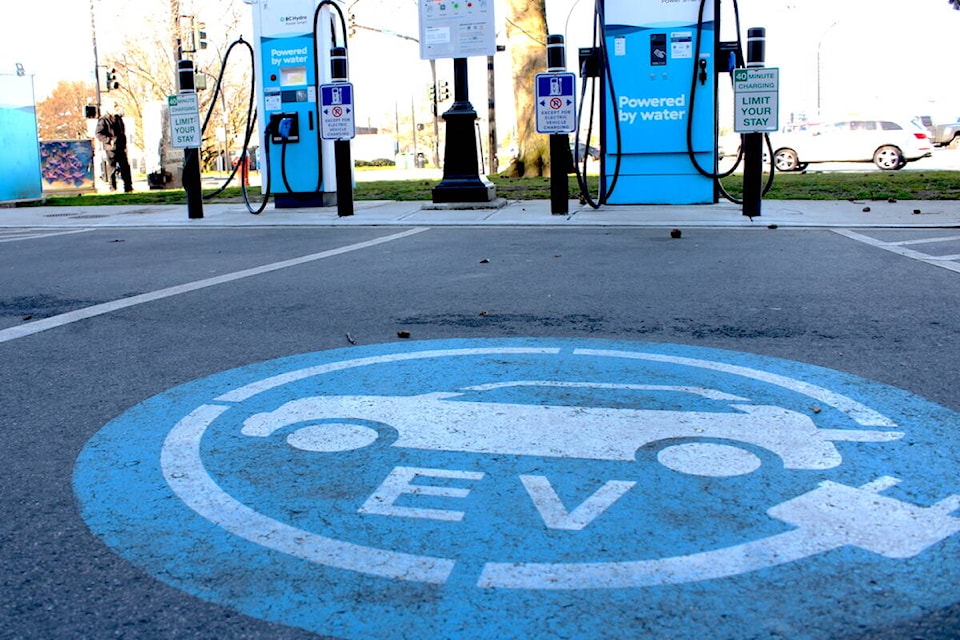To expand electric vehicle use in Victoria, the city will look at making several changes around how locals can charge their lower-emission rides.
Through updates to the EV strategy, the city wants its fast charger fees to reflect the power being delivered instead of the time vehicles are plugged into public stations. Another proposal looks to boost on-street charging by creating a licensing system that would allow people to run cords across sidewalks to their vehicle.
The city has some of the country’s highest adoption rates with just over one in five new cars bought in Victoria being an electric vehicle. Councillors on Thursday (April 18) approved having staff bring forward policy amendments aimed at reducing barriers to EV use, particularly around access to charging.
The federal agency responsible for regulating EV fees is allowing direct current (DC) fast charger operators to apply by July to set kilowatt/hour-based fees. Victoria is currently only allowed to apply time-based levies at public chargers, which the city said isn’t ideal because not all EV models charge at the same rate, with older and cheaper vehicles charging slower.
High-powered DC faster chargers can fully jolt an EV in 30 to 60 minutes and Victoria is looking to build up to 30 chargers over the next four years. The city currently has four public fast chargers.
The city will also aim to introduce a cord-cover permitting program to enable residents to use their household’s electricity to power their EV. The city of Vancouver has such a program in place where it charges licence holders $5 annually to safely run a cord across the sidewalk to their vehicle on the street.
The city’s Accessibility Advisory Committee identified several ways to reduce the risk of cords on sidewalks becoming a hazard. Among their recommendations are only allowing the cords when a vehicle is charging, limiting the number of licences allocated per block and not allowing cords on steeply sloped walkways.
Should it go forward in Victoria, the program will likely require permit holders to protect cords with a yellow rubber cover. The accessibility committee said that colour would maximize viability of the one-inch covers and rubber provides a safer material than other options.
While staff said Vancouver hasn’t heard concerns about accessibility arising from its program, councillors stressed designing Victoria’s program so that wires aren’t a tripping hazard, and so they don’t impede those in wheelchairs or the visually impaired.
The cord program would only focus on lower density neighbourhoods. Staff said it would allow EV charging in those areas as Victoria’s focus in the short- and medium-term is on deploying public chargers downtown and near multi-unit buildings.
READ: Victoria moves to end sheltering in 2 parks, permit new sites for homeless


